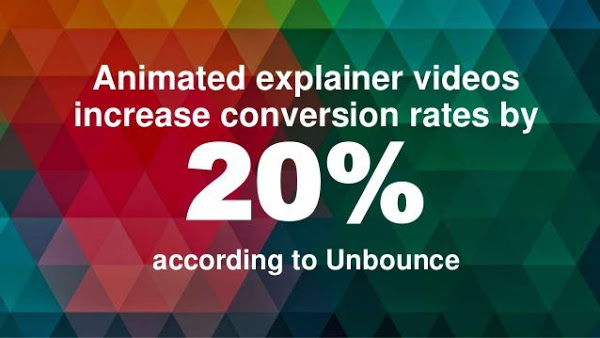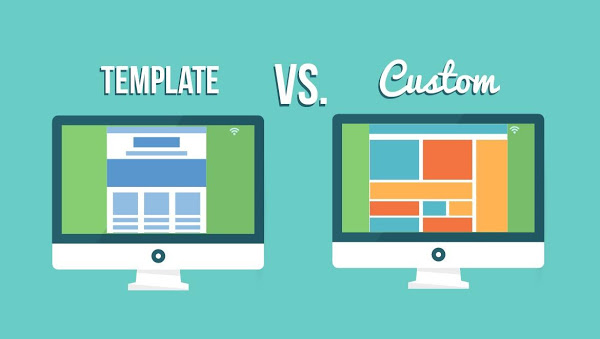Can I be straight up with you?
Many people could spend thousands of dollars on electronics, clothing, and more for their personal use. Why? Because these items are tangible. But when it comes to building a website for our business, we tend to be very careful in spending money.
And there’s a reason for that…
A website is intangible.
Since you can’t hold a website in your arms, how much should it cost? How much should you invest in a website and what results can you expect from it?
These are logical questions that individuals, entrepreneurs, and numerous types of business professionals ask.
Truth is, your business needs a website to make an impact in the world. In a web credibility research study by Stanford, 75% of users said they make judgments about a company’s credibility based on their website’s design.

However, the cost of a website design varies. For example, for someone who’s new to using a website to grow their business, if you charge the person $300 for a basic website, they would cringe and scream, “…but that’s costly.”
On the flip side, someone who is an expert in online marketing and understands the impact of a well-designed website will gladly spend $15,000 to get a professional website.
To get an idea of what your new site may cost, check out our website design calculator.
The good news is that it doesn’t matter whether you’re a beginner or an expert. In this complete guide, I’ll show you the important factors to consider, case studies, and how to cut costs in your website design.
But first, let’s get the basics out of the way…
Why Do You Need a Website?
You need to be crystal clear on your purpose. For most people, a website gets their name out to the world, which is awesome.
But it goes beyond that. A website is actually the lifeblood of your business. For your business to thrive in this competitive age— you need to invest in an asset that cannot be limited.

Your website has the ability to broadcast to the world your great products or services — bringing access to a nearly infinite amount of customers to your business.
In summary, a website can save you time, improve customer service, serve as an excellent branding space, help you drive organic traffic, enable you to sell your product to a wider audience, and much more.
What Do Your Customers Need?
The cost of a website is irrelevant if it will not appeal to your customers. No appeal = total waste of money.
The earlier you train yourself to see the world through the customer’s eye, the better your decisions will be.
-
- Validate your website idea: To get started, you have to validate your website idea with a sample of your customers. Trust me, it’s simple.
Take a look at your competition. Check out what they’re doing. You can call and interview customers, email surveys or take it to social media.

Getting insights from your target audience can truly help you. Doing your homework will help you when you contact a website developer or agency—because then you have an idea of the specifications that will most help you connect with your customers.
-
- Learn forward and anticipate: A website isn’t a short-term tool for getting quick results. It’s actually a lifelong concept that stays for as long as your business lives.
Therefore, you need to design a website that your customers will want for the long haul. You need to explore how underlying market changes might affect what your customers want—and their response to your website. So, design a website that will thrive today and in the future—although, you can always evolve.
-
- Put your ears to the ground: Studying the market and getting into the conversation can truly help you develop and sustain a business-generating website.
Social media conversations can be very insightful. It is important to check multiple platforms including Facebook Groups, LinkedIn Groups, Instagram, Pinterest, Snapchat, Twitter, and other sites and apps that your target audience is using. Look out for emerging trends and make sure to include these on your website.
For example, explainer videos are on the rise right now, and businesses that use them on their product pages/homepage have reported a 20% conversion rate, according to Unbounce.

So, do you think it’d be nice if you add an explainer video to your website?
You betcha!
That said, it’s time to delve into the overall cost of a website. Bear in mind that cost is relative—and will vary from one agency/designer to the other. And to a large extent, the popular saying, “You get what you paid for” holds true.
Don’t get me wrong, it doesn’t mean that spending $10k on a website will guarantee that you’ve made the right choice (always made decisions based on what your customers/audience wants).
What’s Included in the Price of a Website?
Sometimes even the savviest marketers have trouble understanding what goes into a functional website. Regardless, it’s important to be able to spot the difference between two websites that cater to the same audience.
Different web development companies have a pricing benchmark. That is, no matter how basic the website may seem in reality, they don’t go beyond its starting rate.
For most companies though, the hourly rate starts at $150.
For freelance website developers, the hourly rate can vary from $25 to $300 per hour. It all depends on the skillset of these developers, the turnaround time, the creativity, and the quality that each company will deliver within the hours spent on your website design project.
In a nutshell, there are 3 factors that influence the cost of any website:
- Time: Estimated time it would take to complete the website in hours
- Development: Design and coding
- Maintenance: Ongoing maintenance, which includes the content of the website, social sharing, and more
More importantly, you should go for responsive websites. No matter the pricing you get, make sure that your web pages will display well on all screen sizes and devices. You don’t want your website to be penalized and removed from the search engines just because you didn’t optimize it for mobile users.
In the aspect of maintenance, will you maintain it yourself or hire a web development company/freelancer to help you out? Carefully consider this prior to making a decision. It is important to have trained staff (and enough time in their schedule) to properly maintain a website.
Most companies have in-house webmasters that they train to maintain their websites, add content, upload images, engage with social media followers, and more.
If that’s what you want (which is recommended), then ensure that your website is built using a Content Management System (CMS), preferably WordPress.

WordPress is one of the most widely used and powerful CMS platforms out there. It’s open source, so you don’t have to have a license to operate it. With an easy-to-use interface, flexible tools, email verification, and other security features, and offers thousands of third-party plugins including inventory management, affiliate tracking, and more. Standard features such as blogs and other content pages have plenty of options for custom stylings.
If you have an online store, the best CMS for e-Commerce is Magento. They have options for all levels from their Community Edition for small businesses and tech-savvy entrepreneurs to the Enterprise and Enterprise Cloud Edition for large-scale sites. Magento’s extensive features include product catalog creation, advanced pricing tools, and image watermark capabilities as well as standards such as content pages and customer account and grouping features.
How Much Does a Website Cost?
Here are the essential elements that you should consider when designing a website. Most of them are a MUST, while a few others are optional.
Essentials:
-
- Domain name: For most registrars out there, the cost falls between $10 – $100 per year for a brand-new domain. If you want to back-order an expired domain that is relevant to your business and has earned some trusted links, it would cost you anywhere between $20 – $5,000.
If the domain name is premium, the cost will probably be more. Often, these can be related to Real Estate, Financials, or a country-specific domain.
Ideally, you want to keep the costs fairly and choose a domain name that has your company name or product name. Choose your website name carefully. For this, an old expired domain may not be your best choice.
-
- Hosting: Cheap hosting begins at $2.99 per month for shared hosting. There are free hosting options too, but I don’t recommend any of them.
Dedicated hosting (which means that your website will be hosted on its unique server) will cost $50 – $200 monthly. Therefore, you should be ready to invest $50 – $2,000 per year on web hosting.
Bear in mind that you’ll be required to pay additional fees if you want a static IP address, SSL (Secure Socket Layer) certification, and other add-ons.
-
- Custom website design: This would cost you $1,000 – $10,000 depending on your business needs. Obviously, you want a website that truly represents your business and brand. Copying another company’s website could get you into trouble legally, and in the long run, customers will lose trust in you.
Yes, you would pay less if you choose a templated design — but truth be told, a customized website design is what your business needs to be competitive in the global marketplace.

A customized website design will create a better and more user-friendly customer experience. It is important that your customer can navigate easily through the site and then find what they are looking for as quickly as possible. This can include UX Design, Sitemap, Page Navigation structure, Visual sliders, and more.
-
- Content creation: Most website development companies can also handle content creation. However, you’ll spend more money if you pay per hour (as most writers will charge $0.15 per word). But if you pay per article, the average cost for content is around $100 per 1,000 words.
There is no doubt that you need content for your website. No matter how stellar the design looks, if quality content is left out, your brand will not move the needle at all. Think about the variety of content you would like to include on your site before you hire a web development company or freelance developer to help you out.
-
- Project Management: Who’s in charge of communicating with developers? Is it you or one of your staff members? Clarity in project management responsibilities is important for efficiency and keeping you and your team in proper alignment with expectations, timelines, and reporting.
Basically, managing your project, including all necessary tools, will cost $100 – $2,000. Of course, you’ll always find ways to save on that.
The most common reason that website projects don’t work out well is due to a lack of proper management practices. Does your developer have all the required information/materials that will make their work go smoothly?
How about the phone calls, emails, sourcing of information, tools, and a host of initial, and post-consultations that are required for ease of communication?
There are ways to save money through training and development of staff to work in coordination with your website developers.
Optional:
-
- Staff training and testing: Costs here could be $500 – $3,000 to train people who can manage and maintain your website. Most training courses cost $199 – $1997 per year. A coach would charge $60 – $500/hour.
This isn’t a necessity especially when you’re just starting out. Training your team members as I said earlier will save you money and time, but if you don’t have a budget for it, don’t worry about it yet.
-
- Shopping cart integration & coding: This can be costly if you’re on a tight budget. There is a wide range here, but you can find website development companies who charge anywhere from $200 – $5,000 to build a shopping cart script for your website.
Do you intend to sell a product and also process credit card payments on your website? Starting out, you might make do with other third-party solutions like Shopify, Volusion, and BigCommerce.
But as your business grows, you should instruct your website development company to integrate a shopping cart feature and programming into your website. This, as mentioned above, can be taken care of when you choose your Content Management System (CMS).
-
- Automatic social scheduling: A customized plugin will cost $1000 – $5,000 to build. It could be cheaper if you communicate your vision clearly to your website developers.
Many companies choose to do this because it will help them to build a large social media fan base while engaging them with the right content.
Automatic social scheduling means that once you publish a new article, video, or other content on your website, it will be tweeted, shared, and distributed automatically to Twitter, Facebook, LinkedIn, Instagram, Pinterest, Snapchat, and other social channels.

You don’t have to do any extra work—the program or plugin will do it for you.
If you choose to build your website on WordPress CMS, then you’d have access to free plugins which you can use to schedule and post directly to social media networks without logging into each network individually. Trust me, it can be time-consuming. Setting up automatic social media sharing will make sure you maximize your reach and save valuable time best spent in running your business and serving your customers well.
Updating a Website | $50 – $300 per month
If you already have an existing website, there may not be the need to design a new one from scratch. You could simply update it.

However, there’s an additional cost for maintenance and updating involved. The basic maintenance activities include domain and web hosting renewal, SSL certificate, privacy renewals, and theme renewals if it’s a recurring payment.
Renewals are usually done yearly (12 months) or more as the case may be. Depending on the size of your website, you may want to upgrade from shared hosting to dedicated hosting—which can cost $100 – $250 per month.
Here are the major reasons websites need to be updated:
-
- The design is outdated: If your website was designed with flash, you’re aware that flash elements are no longer ideal in today’s fast-paced online space. No user wants to wait for your flash header or banner to load.
The good news is when you update your website you can remove flash elements, and replace them with HTML5 and JavaScript elements.
- The content is spammy or low-quality: Content that doesn’t offer any value should be removed from your website. If it’s duplicate content, you can hire a content writer to create 100% original and valuable content for your audience. Quality content that showcases your brand in an authentic and dynamic way will not only engage your audience but propel your business goals.
- You will want to take advantage of new features: SSL Certificates, Responsive design, adaptivity, and interactivity are some of the new features that you can include on your website.
Factors that Affect the Cost of Website Design
-
- Size: The number of pages that your website will have, bandwidth, images, files, and the quality of content on these pages will increase the cost. All things being equal, a website with 5 pages will definitely cost less than another website with 15 – 20 pages.
- Level of customization: As stated earlier, if you choose to go with a pre-built template for your website, then that’s okay as long as it meets your needs.
However, if you want a better-looking website that’s built from the ground up, it will definitely cost you more. This is similar to hiring an architect to design your home as compared to buying a prefab home.
-
- Responsive design: Do you take mobile users seriously? According to HitWise, nearly 60% of searches now come from mobile devices, and 78% of these searches result in a local purchase—this is good news if your business caters to local consumers in a particular geographical location (e.g., San Diego).

Generally, website development companies will include responsive design as part of the bundle, but for best practices, you should make sure it is included.
Truth is, if you’re not paying a premium price, there’s a chance that this aspect might be ignored. And it can be difficult to detect unless you view your website on several mobile phones with different screen sizes.
I must also point out that a mobile-friendly website isn’t the same as a responsive website.
According to Igor Faletski of the Harvard Business Review:
“Responsive design is the poster child for current web development best practices. Whether you view a responsive website on your desktop computer, iPhone or tablet, the layout will “magically” shrink or expand to fit the device.”
For one, a mobile-friendly website is designed to display well on mobile devices. This means the columns, sidebars, and frames can contract so that mobile users can read the content—although, they might scroll sideways from left to right and vice versa, as they access these web pages.
On the other hand, a responsive website is mobile-friendly + adaptive at the same time, it’s designed from scratch to adapt to all screen sizes.
Take a look at this e-commerce website. Can you see how responsive it is on different screen sizes and devices?

For example, when you view a responsive web page in iPhone 6, the responsive web page will adjust accordingly to the screen, and there will be no need to scroll from left to right to find the hidden elements—because everything on that page will be visible.
-
- Bundled solutions: Most web development companies will bundle logo design, content creation, and graphic design together. This will influence the total price of your website design.
- Additional components you need: A dynamic website that allows your customers to create a user account, and log in to interact with the website will cost more than a static website that has no login capability.
- Your designer’s skill level: Skilled website developers will often charge more for their time. They’re in high demand, and their output is generally very good. But you could hire an intermediate professional—it’s a great way to get a custom website at an affordable price.
- How demanding of a client are you?: What do you want on your website? When you demand advanced features, such as shopping cart integration, automatic social posting, homepage sliders, payment integration, and more, you should bear in mind that you’ll have to pay more.
- Content creation: Website development is quite different from content creation. Each of them requires a different skill set. However, if content creation is included in the website design package, then you’ll be expected to pay more.
You could ask your website development company to remove content creation from the bundle—which means you’ll have to outsource it to freelancers on UpWork, Elance, or hire a professional content writer from their blogs. Quality content development truly matters, so consider your choices wisely. In content development, as in design, you typically “get what you pay for.”
-
- Search engine optimization (SEO): Do you want your website developers to optimize each web page for the search engines? This is important. Oftentimes, businesses have to hire another SEO expert to optimize their web pages—this usually costs extra money.
For a new website though, you don’t need a full-blown SEO structure in place. You simply need to take care of on-page SEO: Header tags, meta descriptions, broken link repair, sitemap generation, and a good reporting mechanism. Google Analytics is a popular one. It can be installed right on your website. Also, make sure to interlink your pages.
Types of Websites You Can Build + Prices Breakdown
All websites aren’t created equal.
There’s a difference between Mashable and Netflix, Nike and Birkenstock, Whole Foods, and your local independent bakery. Consequently, the pricing for websites will vary depending on your customers, your industry, and the size of your business. This section would help you make informed decisions.
-
-
Basic Websites: Free – $100/Month
-
A basic website is ideal for small businesses and individuals on a tight budget. It’s also ideal for beginners that are still learning the pros and cons of online marketing.
If you choose a basic website, there are 2 routes you can take:
-
-
- Do it Yourself: If you know basic HTML and CSS, you can literally build your own website today. But you don’t have to know how to code to do it yourself. WordPress is damn easy to learn as well. All you have to do is install the software on your server, then log in to your dashboard and find a relevant theme. The platform is user-friendly and includes suggestions per industry.
-
Similarly, there are a lot of content management systems and software that you can use to build a website easily. Some amazing tools like SquareSpace.com, Webnode.com, Wix.com, and a host of others are handy.
They also have a wide variety of templates for different industries and fields that you can choose from. If you decide to design it yourself, make sure to keep the overall look of the site representative of your brand and targeted to your audience. Use text and graphics in color schemes that are similar or match very well with your logo. Strategy is just as important to the design of your site as your content.

Of course, these tools cost money (between $0 – $60/month)—but nothing close to what you’d pay if you hire a web development agency or freelance website developer.
The downside of using these website builders is that majority of them (from personal experience) are not mobile responsive. They’re also complicated to learn.
Although you may not write code for everything, you need some basic programming knowledge and skill in order to effectively configure the features of your website.
If you could invest the time to learn and master these awesome tools, I recommend you try them out. At least, you’ll save money while upgrading your website design skills.
-
-
- Hire a Website Developer: $1,000 – $5,000: Aside from designing your own basic website, you can hire a website developer to handle it. Experienced website developers can complete a website project in much less time than individuals without the knowledge or skills. Be sure to communicate your business goals clearly with the developer.
-
You want to establish your presence online. You desire to make your business available 24/7, even while you’re sleeping and not directly working on your website.
A basic website doesn’t portray your business in a lesser light. Trust me – there are big companies that still have basic websites. Funny enough, I’ve also seen and designed advanced websites for small businesses that understand what they’re aiming for – the underlying purpose.

Depending on the skill level that your website developer has, and what you want, a basic website can be static or dynamic; which means you can interact with users via a portal. You should be ready to spend between $1,000 – $3,000.
When we design basic websites for our clients, we make sure they’re 100% responsive, custom designed, and optimized for search engines—which is popularly referred to as search engine optimized (SEO).
It may not be so when you allow other website developers to handle your project. As much as possible, tell them what you want, and agree beforehand on the terms of the project before they ever begin.
-
-
Advanced Websites: $6,000 – $35,000
-
Advanced websites are ideal for medium-sized businesses, established businesses, corporate entities, NGOs, educational bodies, and government parastatals, among others.
The size of advanced websites is the key when we’re discussing pricing because these websites can have anywhere between 20 – 100 dynamic pages. Since these companies are established already, it means that people will naturally search for their websites in Google, type the URL directly into the browser, and follow the brand.
Before designing this type of website, you need to make provisions for huge traffic. For example, Whitehouse.gov can’t invest in a basic website with shared hosting—the amount of traffic to that site will likely crash the server.
Advanced websites can be very stunning. However, functionality is what matters most. As an example, Oxford University website might not be as beautiful as the news media site, Techcrunch.com, but the functionality of the educational website is typically higher.
You can choose which elements you want on your homepage, About Us page, and literally control everything. Of course, you need to communicate with the website developers.

As a client, you can request multiple revisions. After all, paying $7,000 – $15,000 for a website, you’ve got to be satisfied with the final result.
In our web development company, we put functionality and design in focus—and each advanced website is designed to meet the client’s needs. For these websites, clients are able to manage everything—because the cost will cover the training that’s required to manage the website effectively.
I must also point to the fact that websites that fall into the “advanced” category are built on content management systems. This is to ensure that ongoing management and maintenance are done with ease.
Unlike the basic websites where you have the option to do it yourself, I don’t recommend the same for advanced websites (of course, it’s great if you can actually develop a website yourself). Otherwise, hire a web development agency with a proven track record.
Another factor that affects the price of a website design is social interactivity. For a basic website, there’s not an absolute need for that. But for advanced websites, there should be provision for social interactivity with your website visitors.
A blog must also be added to enable you to publish helpful articles for your audience. The design elements that will be present in different websites vary, and I don’t recommend adding flash since it slows down website load time.
But it all depends on what you want. Ideally, we use CSS and XHTML to code our clients’ websites—as this helps in search engine optimization, improves page speed, and enhances responsiveness.
We also integrate Google Analytics into your website to track traffic, page views, user engagement, referral traffic, keywords, and more.
-
-
Custom Website: $20,000 – $200,000
-
A custom website is suitable for large businesses, Fortune 500 Companies, Online Magazines (e.g., Inc, Forbes, Women’s Fitness Magazine), and Web-driven companies like Twitter, LinkedIn, and the like.
These websites are not for the faint-hearted. The designs are comprehensively customized for the individual company. Take a look at Disney. Every element on that page (no matter how tiny) represents the Disney Brand—from the logo to the fonts to the visuals.

Not every website developer can work on custom websites. These websites are not built with premade templates and themes. They’re most often hand-coded from scratch. For example, there’s no website in the whole world that looks like Amazon or Orkut.
Make no mistake about it— you can get a custom website at an affordable cost.
Side note: Choosing a design for a custom website will often result in several meetings with the developer because the developer(s) expects you to clarify a lot of things. You will have to discuss your business objectives, branding, products, and services in full with your developers.
You might need to look up federal or state government regulations in your country or state before designing this type of website. More so, a custom site with over 1 billion active daily users (like Twitter with millions of tweets daily) requires more administrators, a huge backup system, and additional security features.
Going Two Steps Further
-
-
E-commerce Website: $29/month – $100,000+
-
E-commerce websites are suitable for established businesses that sell physical and digital products online.

But there’s no limitation whatsoever. As an individual, you can also run your own online store—though on a smaller scale. In addition to the recommendation for Magento listed above, sites like Dodocase.com and BagDoom are doing well, yet, they’re still small-scale e-commerce businesses.
For E-commerce websites, you have two options:
-
-
- Do It Yourself: $29 – $100/month: Online shopping carts such as Shopify, Bigcommerce, and Volusion allow you to build your own online store. They charge $29 – $100/month, and you’ve access to all the features that an advanced e-commerce website enjoys.
-
The major challenge with these online store builders is complexity—you’ll have to learn basic drag-and-drop skills, which is a MUST if you want to get your store live successfully.
The learning curve can be frustrating—but if you spend more time learning the basic features and how to use them, and you use one of the professional themes (you’ll pay extra money for it), the sky’s the limit.
-
-
- Hire a professional online store developer: There are dedicated professionals who were trained to help clients build online stores to sell their physical products (such as digital cameras, shoes, fitness products, and more).
-
Some website developers may have challenges programming a shopping cart from scratch because they’re not trained for that—their experience may have focused on other specialties.
More often than not, website developers who are proficient in developing custom applications such as mobile apps, web apps, web scripts, and more, are in a better position to develop an online store for you.
In a nutshell, you should be ready to pay $50 – $250/hour — this can spill into thousands of dollars if you calculate the total hours required to build the front and back end of an e-commerce store.
But again, the rules are not set in stone. Learn to communicate with your developers and tell them exactly what you want.
To save some money on your e-Commerce website, you could offer to send your developer potential clients or promote them.
Conclusion

There you have it. The complete guide to website design pricing. We’ll continue to update this page so that you can be certain that our pricing and requirements aren’t outdated.
As a rule of thumb, learn to communicate well with your website developers. Understanding expectations, timelines, and any project limitations are key to a good relationship and an excellent website.
During the website build, if it’s better to communicate via Skype or other video channels, don’t take shortcuts. If it’s phone calls, don’t opt for emails. Effective communication is often the best way to maximize your investment.
Remember that the pricing in this article is intended to provide an overall guideline to help you make informed decisions when you are preparing to design and launch your personal or business website.
Our Awards













